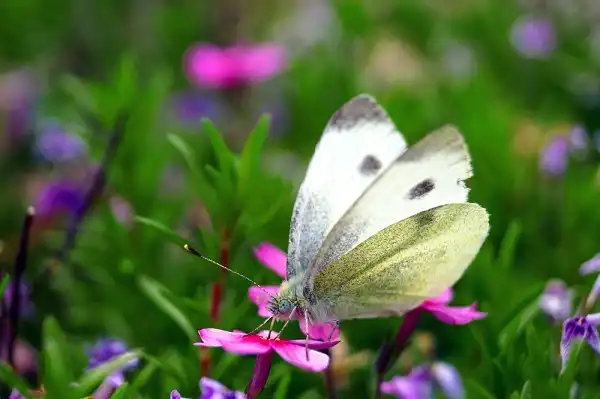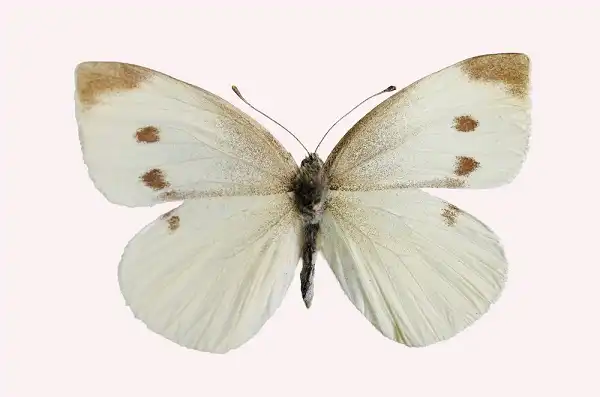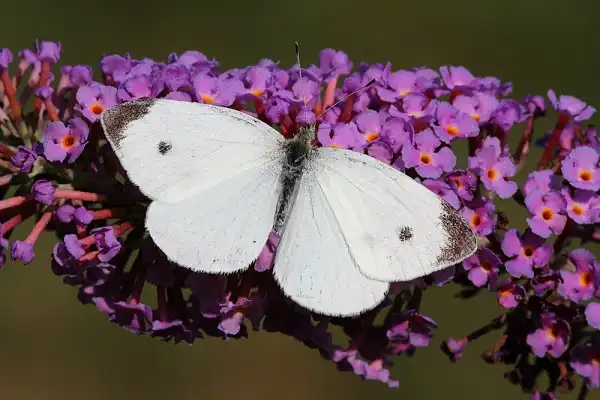The white butterfly is a species of butterfly found in many parts of the world. White butterflies can be seen fluttering around gardens and meadows, adding a splash of beauty to their surroundings. These delicate creatures have captivated both adults and children alike for centuries with their graceful movements and vibrant coloring.

White Butterfly Description
White butterflies are usually found in habitats that provide ample nectar sources, such as gardens and meadows. They tend to feed on a variety of flowers, including dandelions, hibiscus, and clover. During the day they can be seen flitting from flower to flower in search of sugary sustenance. At night they will settle down near their chosen food source and rest until morning. White butterflies have an interesting life cycle that includes four stages: egg, larva (caterpillar), pupa (chrysalis), and adult butterfly. The eggs are laid on the undersides of leaves or other surfaces where they will remain until hatching into larvae.
White Butterfly Habitat
White butterflies are found in many parts of the world, including North America, Europe, and Africa. They prefer open or semi-open habitats with plenty of flowers for nectar sources. Meadows and gardens make ideal habitats for white butterflies, as do forest edges and fields. White butterflies migrate to more temperate regions during the colder months to avoid harsh winter weather. During their travels they may cover hundreds of miles in search of warmer climates where they can spend the winter in relative safety and comfort.
White Butterfly Diet
White butterflies are nectarivores, meaning they feed primarily on the sugary liquid found within certain plants. During their adult stage they will spend most of the day flitting from flower to flower in search of sustenance. They also occasionally eat fruit juices and tree sap for additional nourishment. In addition to being a source of food, flowers also provide white butterflies with essential vitamins and minerals that are needed for survival and reproduction. As such, it is important to ensure that there are plenty of blooming flowers in any habitat where white butterflies are present.

White Butterfly Size
White butterflies typically range in size from small to medium. The smallest species may be as small as half an inch while the largest can reach up to four inches in wingspan. They are typically white or pale yellow with black markings on the upper half of each wing surface.
White Butterfly Lifespan
The lifespan of a white butterfly varies depending on its species, age, and environment. In general, adult butterflies will live for about two to three weeks before dying off naturally or from predation or other causes. The larvae stage of their life cycle usually lasts around two months, while the pupal stage is relatively short at only about two weeks.
White Butterfly Behavior
White butterflies tend to be gentle and shy creatures. They are usually seen in small groups, often fluttering near their chosen food sources. At night they will settle down into a resting position where they remain until morning. White butterflies also migrate to more temperate regions during the colder months of the year in search of warmer climates. During these migrations they may travel hundreds of miles before settling at their destination for the winter.

White Butterfly Protection
White butterflies are classified as Near Threatened by the IUCN Red List due to habitat loss and other human-caused activities that have reduced their populations in many parts of the world. It is important to protect these fragile creatures from further harm by limiting or avoiding
White Butterfly Speed
White butterflies are typically slow fliers and will move from flower to flower in a leisurely fashion. They can reach up to speeds of about 10 miles per hour when migrating, however, which is quite impressive for such delicate creatures. These dainty insects are also capable of flying backwards and hovering in place when searching for food sources. This ability allows them to better access nectar that may be deeper within the flowers, thereby increasing their chances of obtaining sustenance.
White Butterfly Hunting
White butterflies are generally not hunted by humans due to their size and delicate nature, but they may be affected by habitat destruction or other human activities. It is important to conserve the areas in which these creatures live and ensure that there is an ample supply of flowers for them to feed on. By conserving their habitats and providing plenty of nectar sources, we can help ensure that white butterflies thrive for generations to come. By doing our part, we can protect these fragile beauties from further harm and keep our skies full of fluttering wings!

Conclusion
White butterflies are an important part of our natural world, providing us with beauty and joy while helping to pollinate the environment. They can be found in many parts of the world, but their numbers are threatened by human activities such as habitat destruction. By conserving their habitats and providing plenty of nectar sources, we can help ensure that white butterflies thrive for generations to come. With a little bit of effort on our part, we can protect these delicate creatures and keep our skies full of fluttering wings!
Frequently Asked Question

